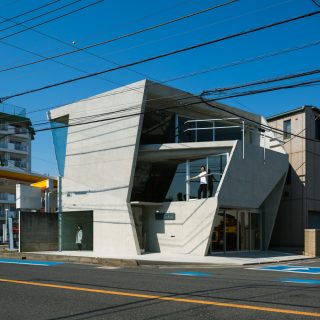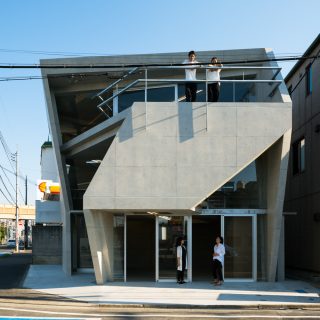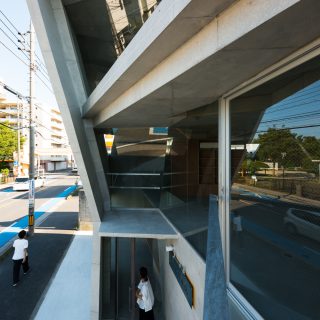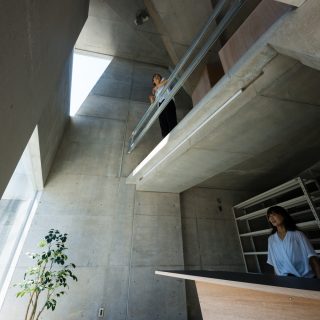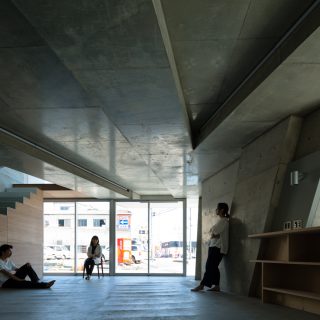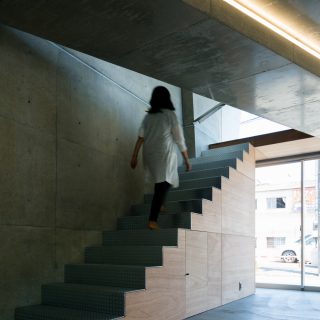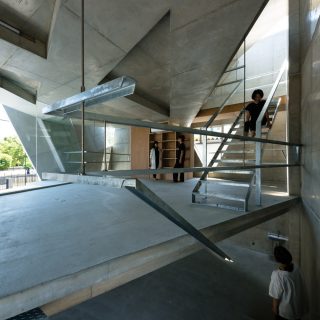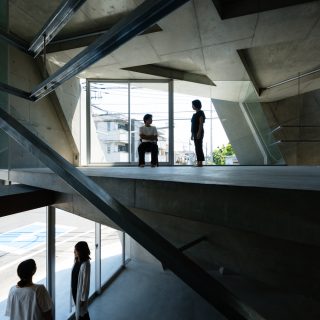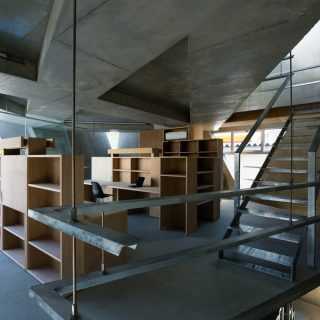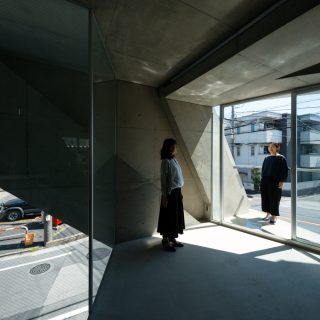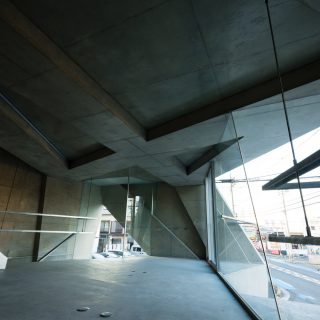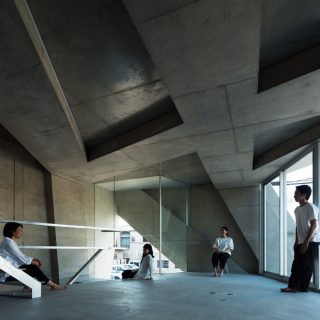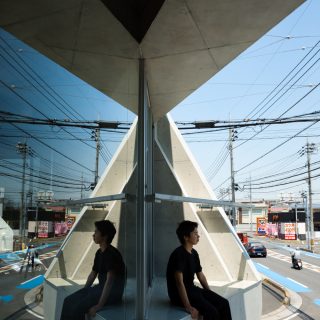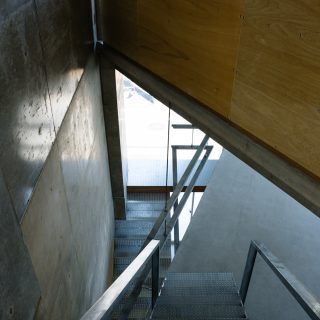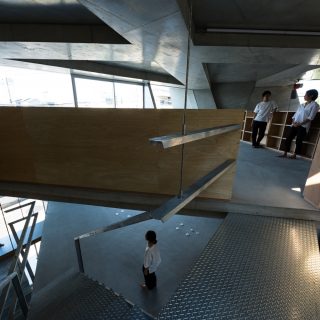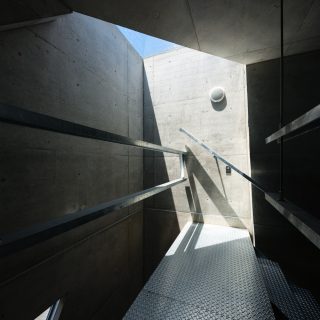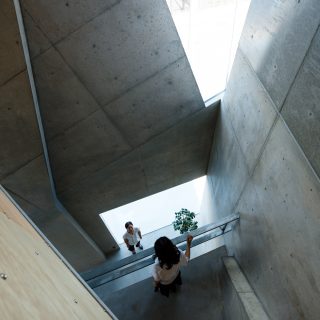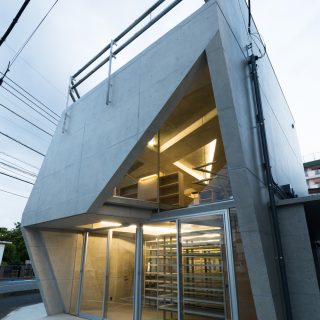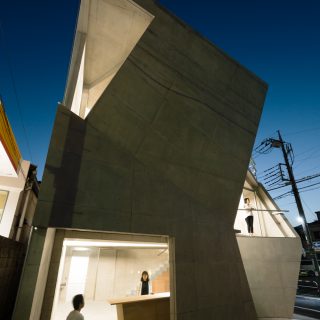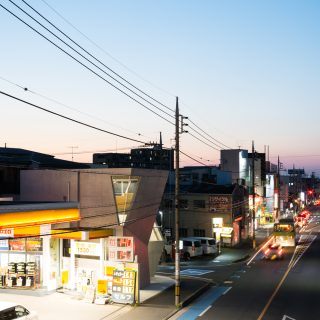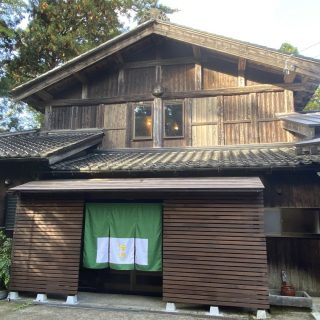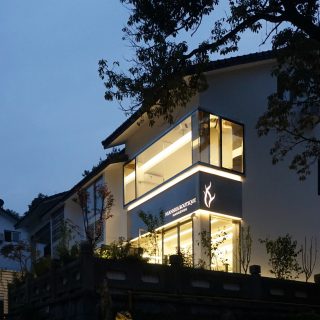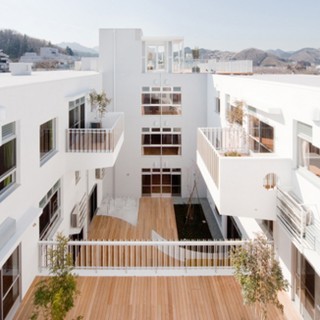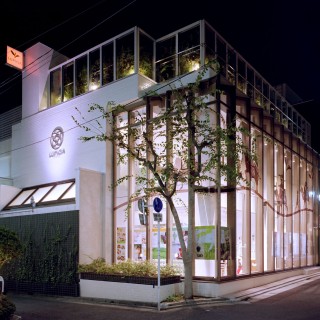
Boltun Headquarters
Yasuhiro Yamashita x Atelier TEKUTO
The Site and the Client’s Brief
The 115.8 m2 site sits along a busy industrial street, and the program was to rebuild the existing warehouse / office building.
Being adjacent to a wide street, the advantages of this site were accessibility with and ease of loading and unloading, quantity and size wize, the merchandize they deal in, and the site also being a corner site, the building would stand out from the surroundings. On the other hand, the disadvantages were the continuous noise during the day, together with the tremors caused by heavy traffic, and extremely weak ground strength.
The clients’ company is a moderate-size retailer handling a vast range of nuts and bolts together with other architectural materials. They requested the new headquarters to have the function of a warehouse, showroom and an office; and to be an interesting, eye-catching piece of architecture. However, the budget was extremely limited, at about 60% (about 240-250K yen per square meter) of an average concrete building. Through analyzing the clients’ requests thoroughly, and with the minimum possible cost and the image of the final structure in mind, I began studying the possibilities together with my fellow structural engineer and contractor.
Creation through Collaboration
In order to lower the building cost I considered using wood structure and steel structure in hope of making the building lighter to correspond to the weak ground conditions. But after some studies, I found out that these options, although lighter, did not make much of a difference cost-wise. All things considered, the final decision was made to go with concrete for its fireproof and soundproof benefits.
I was very confident that this project was feasible despite the limited budget because I was able to work with my collaborators from the very first stages. I have worked with structural engineer Jun Sato for 15 years, and the contractor Shigeki Matsuoka, head of Homebuilder Co., Ltd., has been my collaborator for 25 years building more than 80 projects together. I also knew most of the members working on site for a long period of time.
As soon as we decided to go with concrete, Mr. Matsuoka and I created a detailed list of more than 20 categories and allocated the total cost among them in order to decide on the appropriate materials and architectural details, which is a unque approach and quite the opposite process from normal procedures of design and estimation of cost.
In Pursuit of the Inevitable or What Was Meant to Be and Dynamism in Architecture
Unkei and Kaikei, two famous Japanese sculptors of Buddha statues who were active in the late 12th to the early 13th centuries, are quoted to have said that they do not create the shapes themselves but rather ‘excavate’ the shapes embedded in the pieces of wood. Our design process followed a similar path in nature to that of the two master sculptors.
Aspiring to achieve a powerful, simple yet complex form like bolts, products that gave the company its name “Boltun Co., Ltd.” (BOLT and NUT spelled backwards), I made numerous study models in search of the right form. My goal became to create 3-dimensionally connected spaces with “nuke(noo-kay)*” using continuous walls like a one-stroke drawing existing in one piece of architecture. Also, in order to reduce the building weight by 60 percent of a regular structure of this sort, I shaved off as much concrete as possible from the box-frame structure. The result that emerged before my eyes was a unique structure resembling the mesh-like skin of a cantaloupe . It was something I had never seen before, serene and refined as if I had carved out the Buddha in the structure. The openings were glazed, galvanized steel stairs were installed, and minimalistic suspended handrails were designed with the utmost care not to diminish the power and serenity of the structure. I also designed some built-in furniture using only Lauan plywood, a material mainly used as underlayment and backer boards.
When the client, the contractor and I checked the completed architecture together, someone made a comment to which I totally agreed, that the dynamism and freshness this new headquarters exudes truly match the corporate image of Boltun Co., Ltd.
(Text: Yasuhiro Yamashita / architect)
*nuke(noo-kay): A Japanese concept of physical and psychological continuity and the possibility of objects or senses to pass through from one space / phase to another.
Awards
The Japan Concrete Institute Work Award 2019
Magazines
WEB
gooood (Chinese)
ArchDaily.cn (Chinese)
TREEMODE (Chinese)
ArchDaily
designboom
DIVISARE
ADF webmagazine
ARCHISCENE
Warning: Undefined property: WP_Error::$slug in /home/users/2/megane9988/web/tekuto.com/wp-content/themes/tekuto2nd/single-works.php on line 53
Warning: Undefined property: WP_Error::$name in /home/users/2/megane9988/web/tekuto.com/wp-content/themes/tekuto2nd/single-works.php on line 54
| completion date | 16/ May/ 2018 |
|---|---|
| location | Warabi City, Saitama, Japan |
| building use | office |
| site area | 115.81㎡ |
| building area | 78.75㎡ |
| total floor area | 155.79㎡ |
| construction | reinforced concrete |
| floor number | 3 stories |
| architectural design | Yasuhiro Yamashita, Kenji Mizukami, Fumi Otosaka / Atelier TEKUTO |
|---|---|
| constructional design | Jun Sato, Shingi Tarirah / Jun Sato Structural Engineers |
| construction management | Shigeki Matsuoka, Shinichi Uchimura, Koji Izawa / Homebuilder Co., Ltd. |
| photograph | Toshihiro Sobajima |

